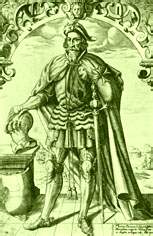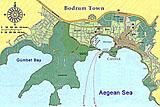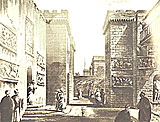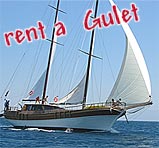|
A visit of Labranda is a must-see
LABRAYNDA
Labranda or Labraynda was a Karian city, famous with great plane tree forests, its water and Zeus Labrandos temple.
The temple was a place for pilgrimage. Labranda was joined to ancient Mylasa (Milas) with a sacred road which is
13 km long. The suffix (-nda) was the place word used by Karians and Lykians in the old Anatolia. Labrynthos comes
from the word Labrys which means two-sided axe. The axe is also the symbol of Head God Zeus.
The oldest things found in Labranda belonged to 600 B.C. The temple. Where the Antiques were more, was dwelled
between 600 B.C. and 400 B.C.

Main Buildings:

The temple of Zeus: It was built in the time of satrap Hidrieus who lived between 351 B.C and 344 B.C. The
dimensions are 25 x 16 metres and 6 x 11 metres one row columns with Attica.
South and East Entrances: (Propylea) It was also build by Hidrieus and located on the road which joined
the Sacred Road with the city,.
The Doric House: It is called thus because of the four Doric style columns in front of the building, built
by Hidreus.
The Stadium: It is 176 metres long and the two ends of the building are still whole.
Great Grave: The building includes a front courtyard and two rooms one after the other. It was built in
the soft rock technique in the 4th cntury BC.
The Houses of the Monks: On the Architrav there is a script saying: „Hidrieus, the son of Hekatomnas from
Mylasa has devoted these house to the God Zeus."
The Androns: These are some kind of clubs where met. There are tree Andron, (A) was built by Maussolos between
377 and 352 B.C. Andron (B) and (C) were built by Hidrieus.
The North Stoa: This was built by Maussolos.
The East House: It was built in the 5th century B.C.
Old House with Terrace: It was buiklt in the 5th century B.C. and the New House was built in the 4th century
B.C. The bath and the East Church were built in Byzantian period. The fountain and the West Stoa and the bath were
built in the 1st century A.C.
Sacred Road: Between Milas and Labranda the remainders of the Sacred Road can be seen.
|

|
|
|
Sir Thomas Docwra
Leader of the English Langue
|
|
More of the Bodrum museum  here here
|

|

|

|
|
 The castle of St Peter is
the landmark of Bodrum and hosts a museum of a special kind The castle of St Peter is
the landmark of Bodrum and hosts a museum of a special kind

|
|

|
|

|
|

|
|

|
|

|
|

|
|

|
|

|

|

|
|
 on this drawing from around 1800 you still
can see the friezes built in the walls of the castle on this drawing from around 1800 you still
can see the friezes built in the walls of the castle

|
|

|
|


|

|

|
|
all boats - all itineraries,
choose a gulet  from here
from here

|
|